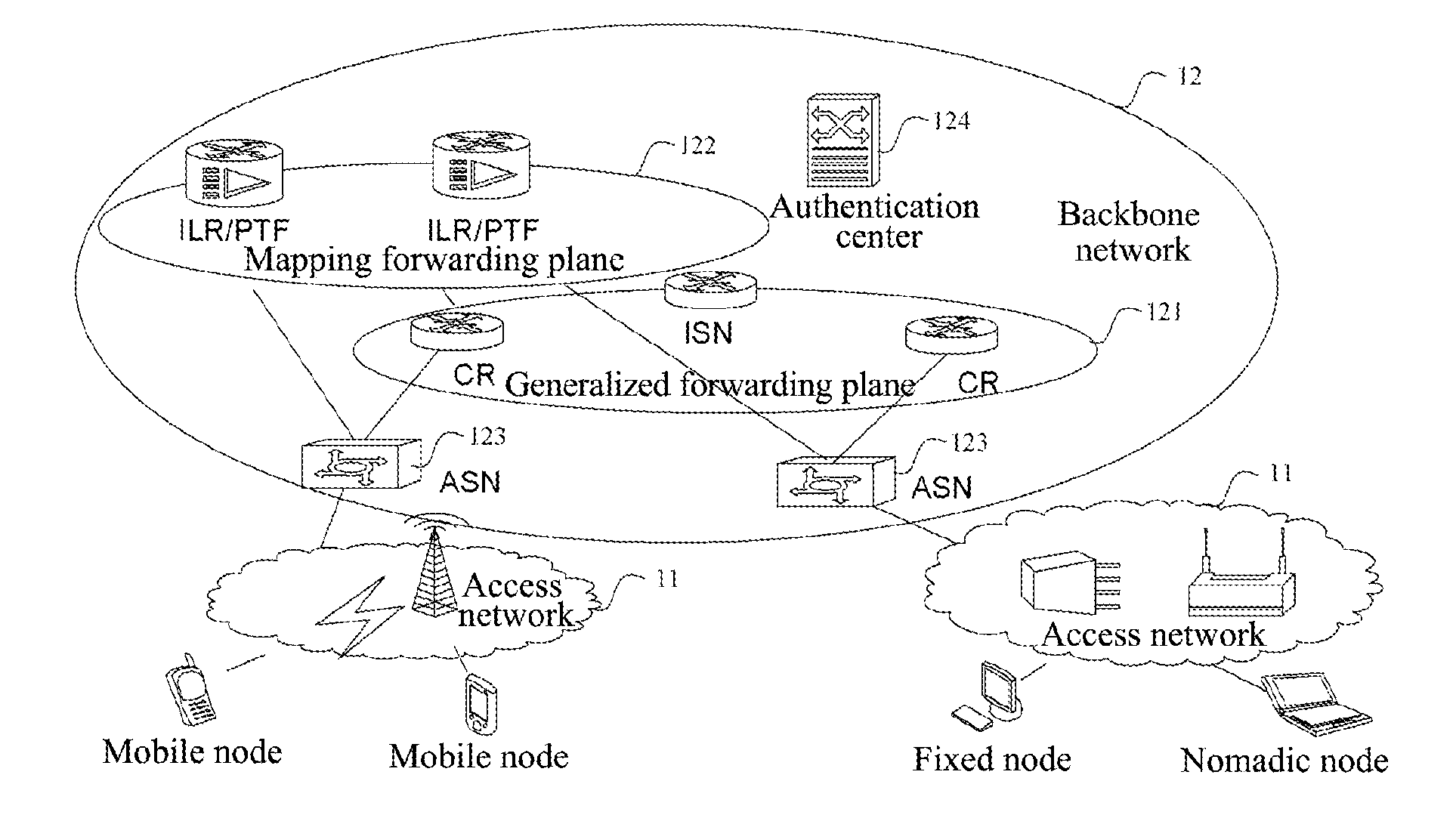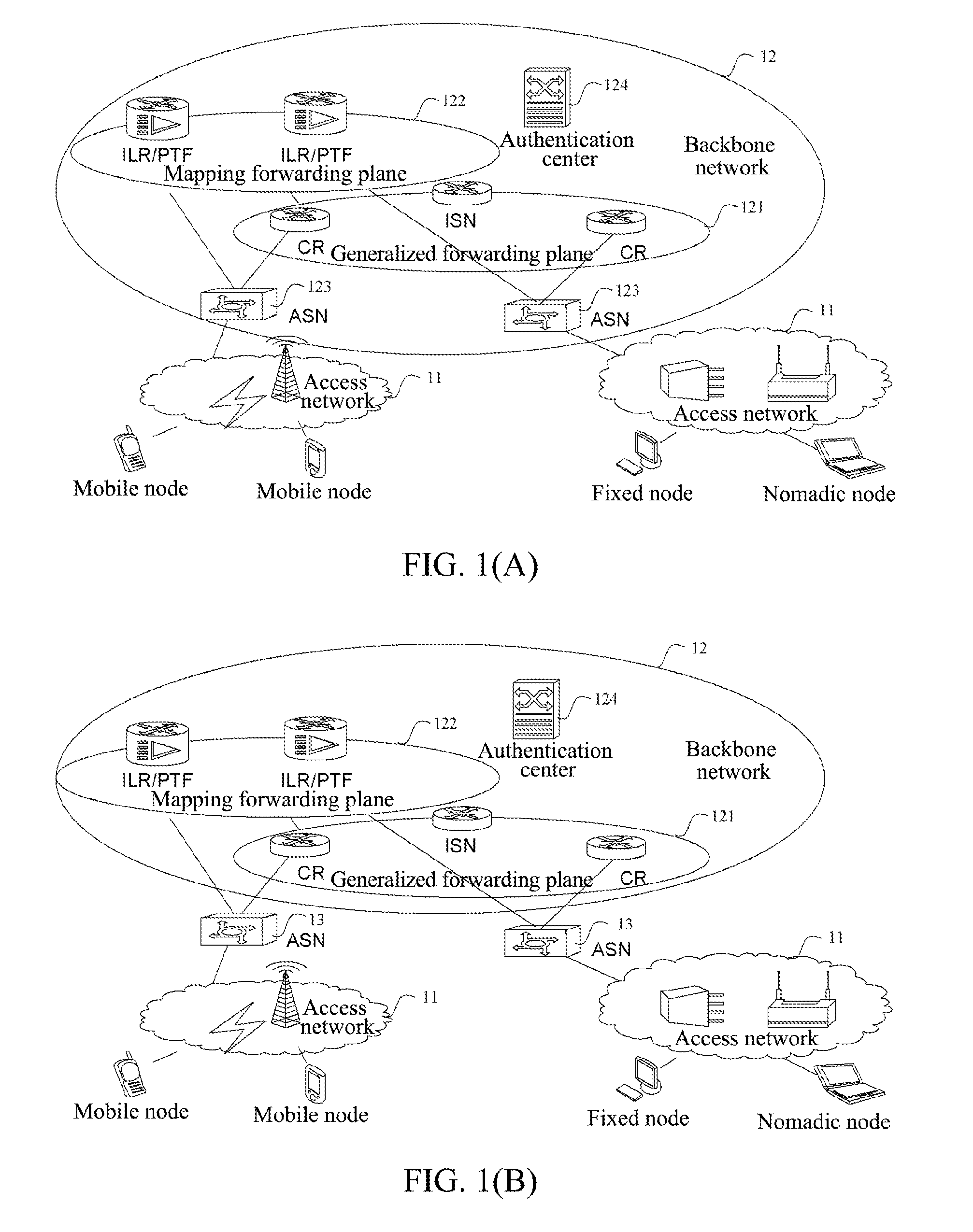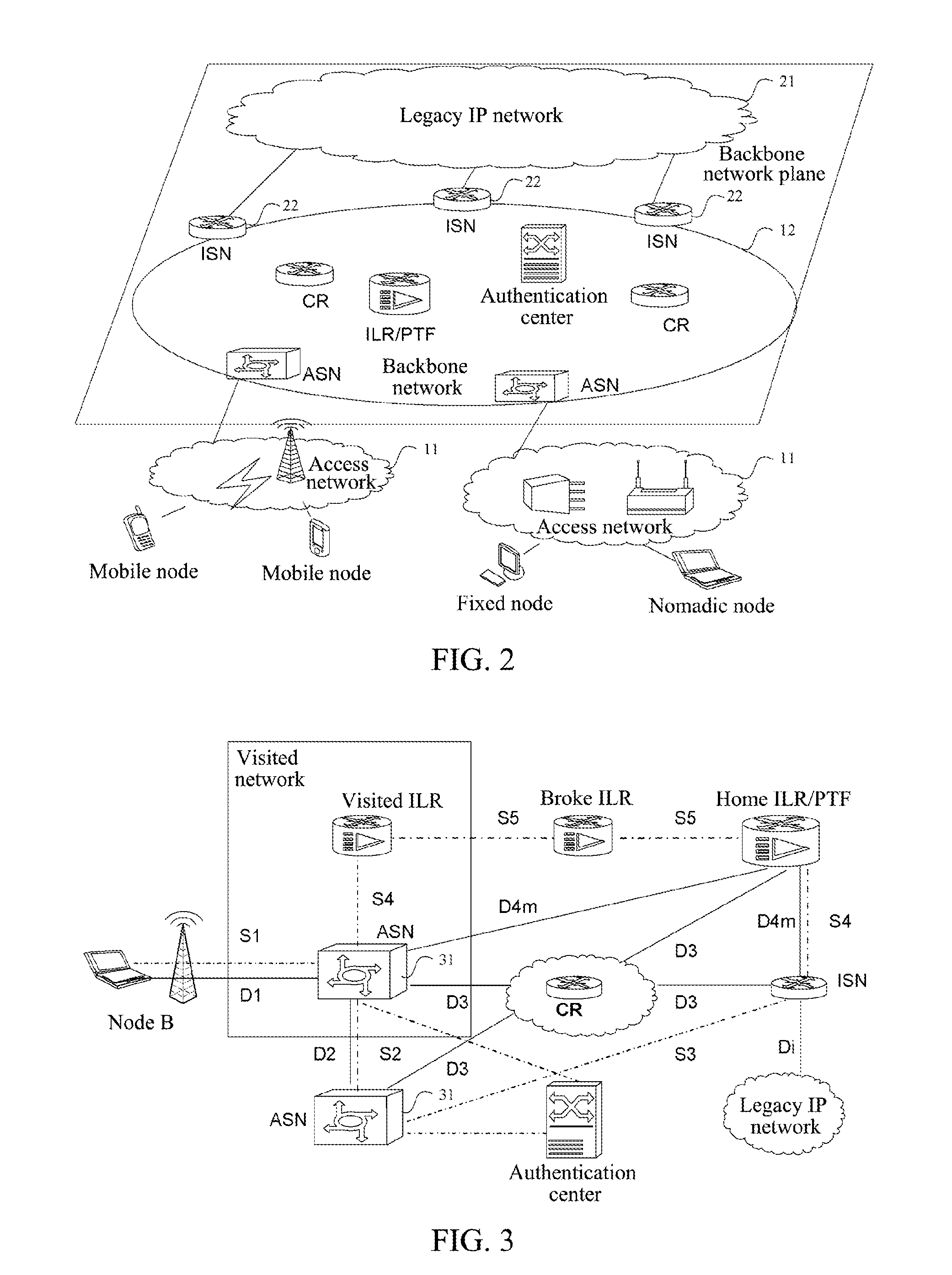Network based on identity identifier and location separation architecture backbone network, and network element thereof
a technology of identity identifier and location separation, applied in the field of network architecture, can solve the problems of increasing transmission delay and bandwidth waste, not communicating with other nodes, and worsening of circuitous paths, so as to improve the scalability of routing systems, prevent backbone network devices, and strengthen user privacy
- Summary
- Abstract
- Description
- Claims
- Application Information
AI Technical Summary
Benefits of technology
Problems solved by technology
Method used
Image
Examples
Embodiment Construction
[0149]In the following, the technical solution of the present invention will be described in more detail with combination of the accompanying drawings and specific embodiments.
[0150]In this example, the topology of the network based on the identity and location separation architecture (abbreviated as the architecture) is as shown in FIG. 1(a), and the architecture divides the network into the access networks 11 and the backbone network 12. The access networks are located at the edge of the backbone network and are set to be responsible for the access of all the endpoints. The backbone network is set to be responsible for the routing and forwarding of the data messages between the endpoints that access via the access networks. The access networks and the backbone network have no overlap in the topology relationship.
[0151]In the architecture network, there are two identifier types: the access identifier (AID) and the routing identifier (RID). Wherein, the AID is the user identity iden...
PUM
 Login to View More
Login to View More Abstract
Description
Claims
Application Information
 Login to View More
Login to View More - R&D
- Intellectual Property
- Life Sciences
- Materials
- Tech Scout
- Unparalleled Data Quality
- Higher Quality Content
- 60% Fewer Hallucinations
Browse by: Latest US Patents, China's latest patents, Technical Efficacy Thesaurus, Application Domain, Technology Topic, Popular Technical Reports.
© 2025 PatSnap. All rights reserved.Legal|Privacy policy|Modern Slavery Act Transparency Statement|Sitemap|About US| Contact US: help@patsnap.com



